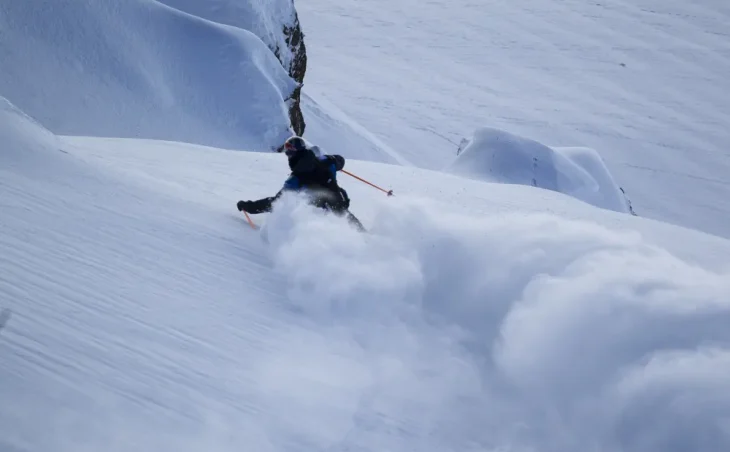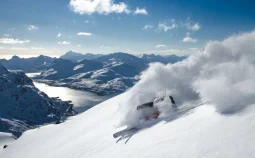Several hundred years ago, it was customary for visiting priests to take on the mountain demons who locals believed were responsible for the rapidly advancing Chamonix glaciers. With the Mer de Glace now receding, it looks like the priests finally won the battle – or maybe it’s just global warming?
To give you an idea of how things have changed, there is an impressive scale model of the Chamonix Valley in the High Mountain Office on the top floor of what is the oldest building in the famous French ski resort. The Maison de la Montagne dates back to the 1200s and was built as a priory for Benedictine monks, but is now the HQ for the local ESF.
As well as all the Chamonix ski lifts etc, the model shows the Mer de Glace (sea of ice), which is the second largest glacier in the Alps – and if you ask one of the staff nicely, they’ll show you on the model how much of the glacier has disappeared in recent years.
But there was a time when the few farmers who lived and worked in the valley were so afraid of how fast all the glaciers in the area were advancing that they held religious ceremonies in an attempt to exorcise the demons and witches they believed were responsible.
These ceremonies took place during the last ‘little ice age’ between the mid-1500s and mid-1800s, when the glaciers were advancing down the mountains quite dramatically. Priests were asked to place a cross at the terminal snout of glaciers to encourage them to recede.
This was just one of the long-forgotten ceremonies held in high Alpine villages to ward off evil spirits. Another involved burying eggs in the snow during the winter at the bottom of avalanche-prone slopes in the hope of appeasing the witches that locals believed caused the slides. In fact, some thought the mountains were cursed.

The famous mountains around Chamonix, such as Mont Blanc and Aiguille du Midi are well known among skiers and snowboarders who regularly visit the area. But when the area was first mapped out in detail in 1730, the mountains and glaciers were excluded.
None of the mountains had names, and the entire Mont-Blanc Massif was called the ‘Montagne Maudite’ – Cursed Mountain – up until 1742 when Mont Blanc was given its name by the scientist Pierre Martel.
Like several other French ski areas, the British pioneering spirit played its part in the birth of Chamonix as a tourism destination. Two Englishmen, William Windham and Richard Pococke, are considered to be the first ‘travellers for pleasure’ in the area when they visited in 1741. During a hike with a guide, they named the ‘Mer de Glace’ glacier, and their published reports helped identify Chamonix’s potential.
Chamonix soon earned a reputation as a major destination for climbers and hikers. The hamlet started to expand into a town, but it was not until the early 1900s that skiers such as Arnold Lunn visited the area during the winter to take advantage of the hotels and restaurants which were already in place for summer tourists.
Many of the old buildings that were built in the now historic town are still standing, but I wonder what Windham and Pococke would have made of all the changes that has seen Chamonix expand to offer five different ski areas – Grands Montets, Les Houches, Le Tour/Balme, La Flegere and Le Brevent.
It has become a world-famous mecca for skiers and snowboarders and one of the most popular destinations for British tourists during the winter.
For more information on Chamonix and the holidays and accommodation available through Ski Line CLICK HERE
Chat with our experts
For tips and advice on booking a ski holiday to Chamonix, call our expert sales team on:
020 8313 3999 All Ski Deals
All Ski Deals
